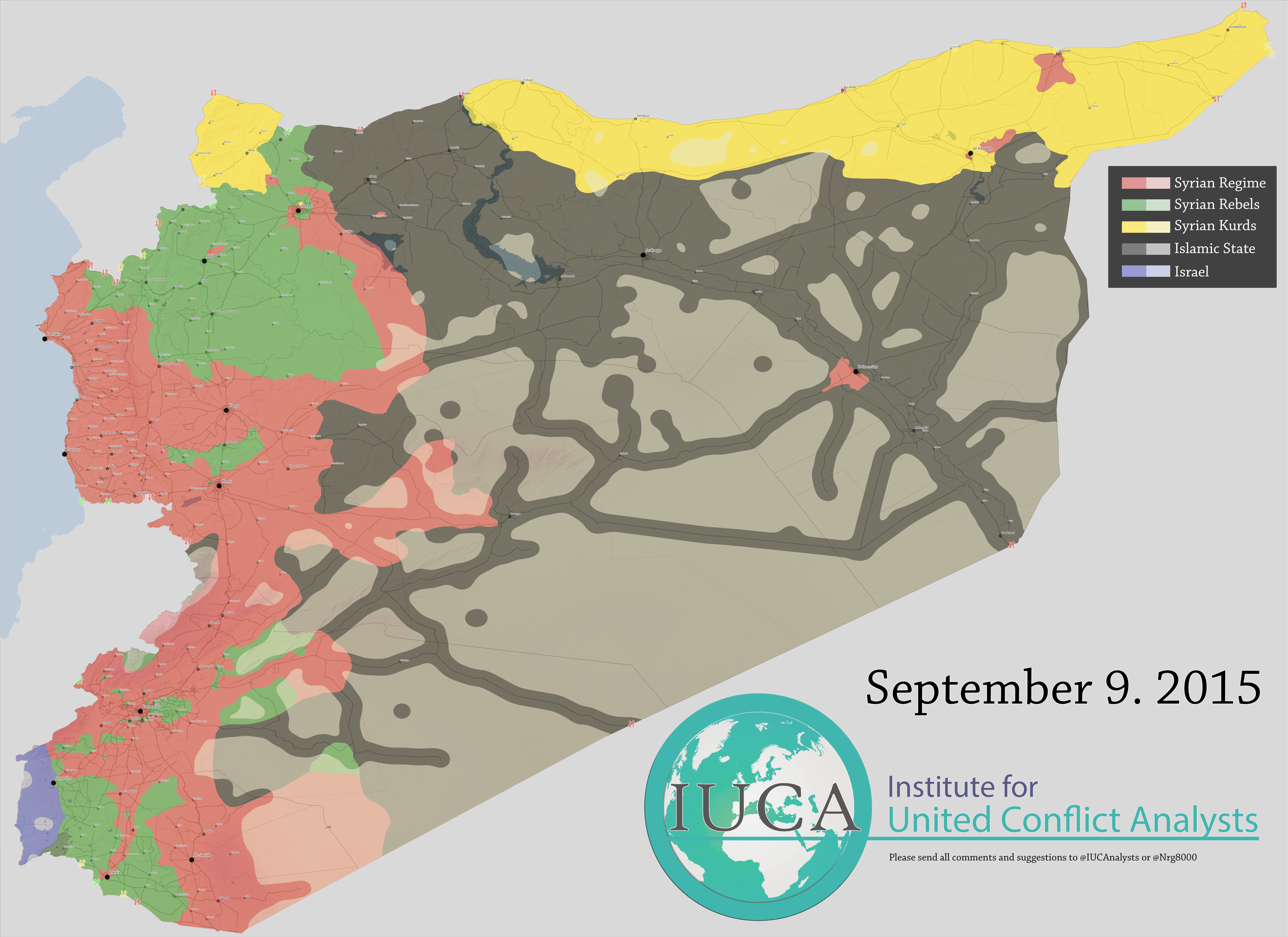Image may be NSFW.
Clik here to view.
Moscow will reportedly provide Russian troops in Syria with an advanced antiaircraft missile system as part of its military support for Syrian president Bashar Assad.
"This system is the advanced version used by Russia, and it's meant to be operated by Russians in Syria," a Western diplomat who is regularly briefed on US, Israeli, and other intelligence assessments told Reuters.
And as The Daily Beast's Michael Weiss points out, any antiaircraft missiles deployed by Russian troops in Syria won't be directed at ISIS, since ISIS has no air force.
In fact, none of the rebels do — only government forces have access to aircraft.
Russia has substantially increased its military presence in Syria over the past two weeks under the guise of helping the embattled Assad fight ISIS and other extremists.
And now that US and Russian fighter jets are flying side-by-side — the US has been launching airstrikes against ISIS since mid-2014, and Russian drones and fighter planes are reportedly surveilling non-ISIS rebels in the country's north — Moscow sees it as an opportunity to force Washington to come to the table.
This morning, Putin issued a veiled threat to the US, warning that "unintended incidents" may occur if Washington refuses to restart military-to-military cooperation with Moscow, which was cut off when Russia annexed Crimea in 2014.
"Well, but now I have fighter jets flying in the same sky. What if they crash into yours? We should talk, no?" Weiss, playing the role of Putin, said on Twitter.
Weiss then implied that Putin could use the antiaircraft missile system as leverage to get the US to operate in Syria on Russia's and Iran's terms.
Image may be NSFW.
Clik here to view. According to Bloomberg's Josh Rogin, Russia may ultimately get its way.
According to Bloomberg's Josh Rogin, Russia may ultimately get its way.
"For some in the White House, the priority is to enlist more countries to fight against the Islamic State, and they fear making the relationship with Russia any more heated," Rogin writes.
"They are seriously considering accepting the Russian buildup as a fait accompli, and then working with Moscow to coordinate U.S. and Russian strikes in Northern Syria, where the U.S.-led coalition operates every day."
The increased presence of Russian and Iranian troops in Syria is the "result of a meeting between [Iranian military mastermind Qasem] Soleimani with Russian President Vladimir Putin" and is due to "Assad's crisis," a senior Israeli security official told Israeli outlet Ynet news Thursday.
Iran, under Soleimani's purview, has long since taken over Assad's fight in crucial parts of Syria. Iran now seems to be upping the ante with Russia's help as the rebels advance and Assad loses territory.
"The Russians are no longer advising, but co-leading the war in Syria," a Western intelligence official told Fox News.
Image may be NSFW.
Clik here to view.
On Wednesday, State Department spokesman John Kirby called out Russia over ISIS in Syria:
"Russia is not a member of the coalition against ISIL, and what we’ve said is that their continued support to the Assad regime has actually fostered the growth of ISIL inside Syria and made the situation worse,” he said, using an acronym for the Islamic State (aka ISIS and Daesh).
“If they want to be helpful against ISIL, the way to do it is to stop arming and assisting and supporting Bashar al-Assad.”
Russia initially said that it had only deployed "military experts" to Syria to help government forces learn how to use Russian military equipment. But more than 1,000 Russian combatants are already on the ground in Syria, according to officials monitoring the buildup, and many of them are from the same battle-hardened brigade that helped annex Crimea.
Image may be NSFW.
Clik here to view. Basically, Russia's operation in Syria is meant to secure its interests there.
Basically, Russia's operation in Syria is meant to secure its interests there.
"It is difficult to overstate Russian determination not to lose its influence in Syria via the Assad regime, which provides Russia with a Mediterranean and Middle Eastern base that cannot be replaced elsewhere," The Soufan Group noted in an intelligence brief.
SEE ALSO: We're reportedly about to see some familiar Russian faces in Syria — and that's trouble
Join the conversation about this story »
NOW WATCH: This $200 million plane is called the 'most lethal fighter aircraft in the world'